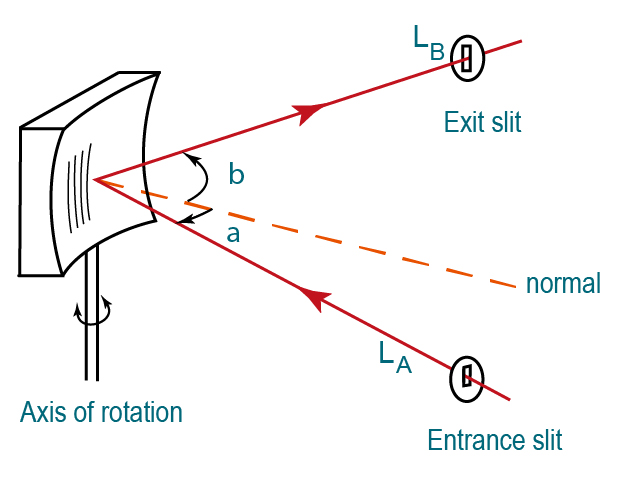OEM gratings design and production capabilities
HORIBA Scientific produces a wide range of holographic master gratings from which high precision replicas are manufactured.
Using Type IV aberration-corrected monochromator gratings, a single concave grating disperses, collimates, and refocuses the light from the entrance slit onto the exit slit. Wavelength scanning is obtained through a simple rotation of the grating.
The groove spacing of these gratings is computer-optimized to produce high quality images with a minimum of astigmatism and coma, even at large numerical apertures. Compared with Czerny-Turner monochromators (equipped with one plane grating, one collimating mirror and one focusing mirror), Type IV aberration-corrected monochromator gratings provide much better light collection efficiency and signal-to-noise ratio.
ㆍ Replica gratings from aberration corrected master gratings
ㆍ Holographic Master can be blazed by Ion-beam etching method for higher efficiency
ㆍ Ideal for robust, compact and low stray light monochromators
ㆍ Several references available some (not all are listed in the catalogue)
ㆍ Large range of dispersion available
ㆍ Multiple spectral range from UV to IR
ㆍ Coating: Al or gold.

Fig. 1: Monochromator concave grating
LA: distance between the grating and the entrance slit
LB: distance between the grating and the exit slit
D: deviation angle
F/#: optical aperture
Fig. 2: Imaging Scanning Monochromator
|
Product Management and Quality
|
Customer Oriented and Confidentiality
|
ㆍ Spectral ranges: from 190 to 10,000 nm
ㆍ Large range of groove densities: from 100 to 2000 gr/mm
ㆍ Diffraction efficiency optimized for UV, or Vis, or NIR
ㆍ Radius of curvature : from 100 to 1232 mm
ㆍ Dimensions : from 25 x 25 mm
ㆍ For customers in need of larger dimensions, HJY can record a custom-made holographic grating master specifically for replication.
Fig. 3: Typical efficiency curve* for 532 00, 1200 l/mm, 190-1050 nm
*This efficiency curve is absolute theoretical efficiency, calculated using rigorous electromagnetic theory, taking into account the true groove profiles of manufactured gratings measured with an atomic force microscope (AFM).




